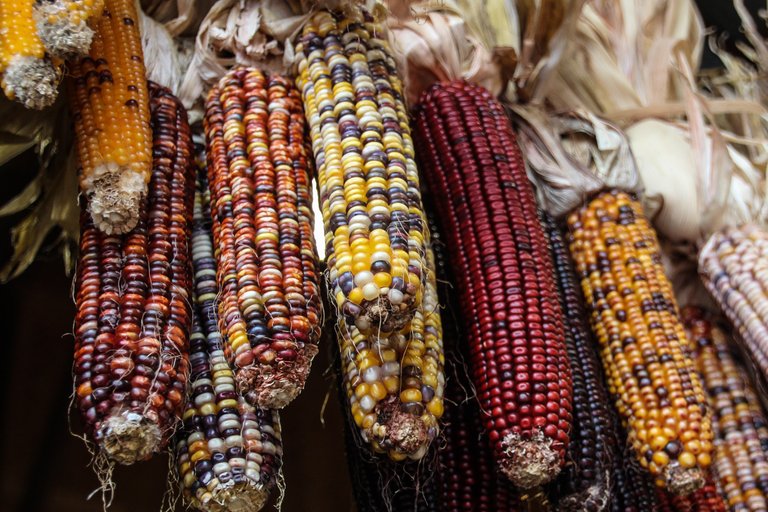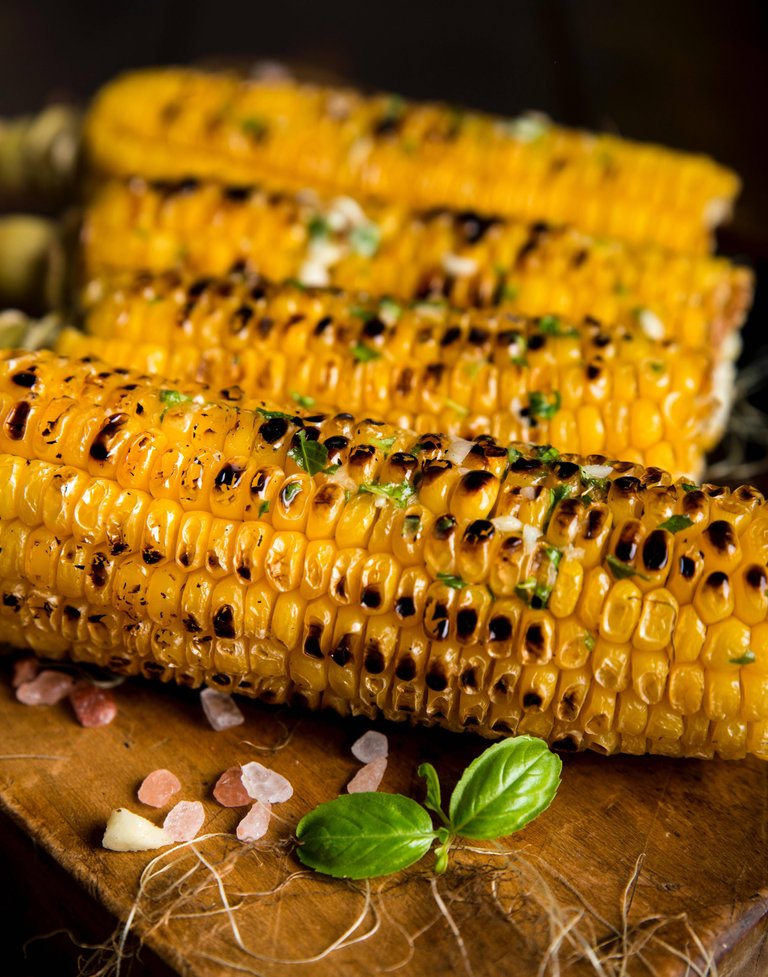Why you should consider maize as a daily diet

Photo by Randy Fath on unsplash
From the outset, the cultivation of cereals remarked as a staple food in diets is highly promote across many provinces, in which China, India, Indonesia, and Pakistan are known as the highest producers of cereals, followed by the United States, and then Africa.
The rationale behind the cultivation of so many diversity of cereal crops in many places is because of the tremendous amount of energy derived from cereals, their medical applications, and the nutriment they provide for our livestock.
Generally, cereals are plants that develop grains enrich with starch as their fruits. Grains of this type of plant provides a considerable amount of energy needed for daily activities. The nutritionists distinguished cereals as another valuable source of diet because of the essential nutrients it comprises.
There are many different varieties of cereal known so far, which include; rice, wheat, maize, oats, barley, rye, millet, and sorghum. But even at that, rice and maize are the dominating cereal of all time because of the nutritious substances like vitamins, minerals, carbohydrates, fat, protein, and oil it contributes to our diet.
In the course of this article, I'll concentrate more on the maize and it's health benefits.
Understanding the Maize structure
From the estimate, the United States is recognized as the largest producer of maize, producing 3666 million metric tons from the year 2018 to 2019, followed by other countries.

Structure of a maize plant
source:Wikipedia, Author: LadyofHats,CC0 1.0
Maize, classified under the family of Poaceae, is another type of cereal crop like I have mentioned earlier. It is commonly tall but sometimes, change in mutation can alter its hight. It has an edible yellow or white kernel called sweetcorn along its sides. Maize is under the monocotyledonous plants and its leaves being parallel venation in nature are fastened at a right angle to its stalk for adequate exposure to the sun in other to boost its photosynthetic mechanisms.
It has a large pitch and ring of vascular bundle located at the center of the stem. Maize lacks the mechanism that induces the secondary growth, hence it can not develop branches.
The uppermost part of the maize stalk called the tassel is where the male inflorescence also is known as the male flower originates. Because the pollen grains established in the anther are naturally dispersed by wind, thus they are smooth, light, and not sticky. Before the male flower develops, glumes are attached to the stamens. When the filaments advanced, the glumes usually open to let the filaments out from the glumes. The anther, attached to the developed filament contains numerous small pollen grains that can be easily dispersed even by the feeble movement of the wind.
Splitting of the anther when ripe will release the enclosed pollen grains to the environment.
The female inflorescence of maize evolves from the cob or ear in the axil of one or more leaves. The female flower comprises ovary which form the fruit(the karnals), style, and stigma. The long stigma protrudes and hangs out of the cob as the silk. Modified husk leaves usually the ear and the carpal. The ear grows into a kernel after fertilization has taken place.
The maize kernel
The fruit of maize is what is called the kernel or generally known as corn and maize in many parts of the world.
According to Wikipedia, one ear of corn contain roughly 800 kernels in 16 rows. Normally, the color of maize kernels is usually yellow or white but sometimes, it can be mixed up with other colors or some may have the black color throughout.
Note that one full ear of maize contains about 100 calories.
A maize kernel or the grain is made up of three layers. The outer layer is called the pericarp while the inner layer is known as the endosperm, completely covered by the thin layer called testa or the pericarp. The endosperm usually the site of food storage is the largest portion of the maize kernel and it is largely enriched with starch while a little fraction of protein is found on the outer layer.

Photo by Bart Heird on unsplash,
The kernels of the maize is mixed up with different colours
The third layer is the embryo. A plumule, a radicle, and one cotyledon( this usually develop into the seed) altogether, make up the embryo. The inner part of the embryo is where the radicle is structured to and it is being surrounded by the coleorhiza( this is the coating that protects the radicle). A significant part of the embryo is fixed deeply into the scutellum. The lower portion is the radicle while the upper part is the plumule.
Nutritional value of maize
Like I said before, maize is the source of many foods and it can be consumed when cooked, roasted, or in its raw form.

Photo by Dragne Marius on unsplash
Roasted corn kernels
Maize grains contain essential macro-nutrients like starch, fiber, proteins, and fat.
It is also rich in vitamin c, vitamin E, vitamin K, vitamin B1, vitamin B2, vitamin B3, vitamin B5, vitamin B6, folic acid, selemiun N-P-coumaryl tryptamine, N-Ferulyl tryptamine, B-Carotene and a significant amount of potassium, magnesium, zinc, phosphorus, copper and other micro-nutrients.
Maize corn supplies us with all the above-mentioned essential nutrients. The
Kernel of a maize cob is acknowledged to comprise about 5-6% of fat hence it is a low-fat food. Nevertheless, the fat contains in the corn is of great advantage to the body. The fat replenishes the body with a significant amount of subcutaneous fat found under the dermis of animals. The work of the subcutaneous fat is to help us reduce the amount of heat loss from the body hence acting as an insulator for the body.
Also, the presence of fat from maize corn helps the texture of our sustenances.
Nutrition researchers have asserted some phytochemical compounds such as Carotenoids, phenolic oxidants, and phytosterols from maize.
Phytochemicals are valuable compounds that boost the immune system to fight off diseases like cancer and to prevent damage which may be caused by dangerous radicals to the body cells. In this case, maize can act as a radical antioxidant.
The function of the antioxidant in the body is to prevent cells from unstable radical molecules that can pass into the body when exposed to pollution, cigarette smoke, radiation, and some toxic chemicals. This radical can alter genetic mutation when the hereditary material is attacked, and when this happens, there will be an unnecessary growth of the cells.
Carotenoid found in maize assists the retardation of cancer development and eye infections. Scientists have verified that lutein and zeaxanthin(another aspect of carotenoid) can prevent the eye from the harmful effects of the dangerous blue light.
High-energy rays from the blue light weaken the retina but lutein and zeaxanthin can prevent the eye from the effects of the blue light.
Furthermore, corn silk is never left out. It is of extraordinary benefit in the field of health maintenance. Nutritionists have affirmed that the silk of maize is rich in protein, carbohydrates vitamins, and fibre.
Maize silk function as an antidiabetic. It is required for lowering the level of sugar in the blood when preferred. Due to some valuable biological substances found in silk, inflammatory and diuretic disease are being remedied with silk by helping to remove waste substance acquired by the wear and tear in the body via urine.
On the other hand, in the treatment of prostate inflammation, kidney stones, bladder disease, and bedwetting, corn silk can serve as a medication.
Pregnant women are advised to eat corn silk since it can boost the immune system when consumed in its natural quantity but should note that it can evoke miscarriage when the quantity taken is abnormal.
Vitamin K, discovered in silk promotes stronger bone and also boosts the efficiency of the blood clotting mechanism in the body.
Corn Maize is believed to possess an anti-HIV property like the natural Galanthusnivalis agglultinin (GNA) lectin. This is because the lectin is proteinous, and have a great affiliate for carbohydrate. Hence the binding of the sugar to the lectin inhibits the action of the HIV.
In conclusion, maize is an outstanding enriched crop that improves our health and that of animals due to the essential nutrients and the phytochemicals it contains.

Source
•Cereal grain health benefits as a functional food
•Cereals & Grains
•Corn kernel
•Corn Silk
•Describing the maiz
•Maize—A potential source of human nutrition and health
•Lutein and Zeaxanthin for Better Eye Health
•Maize
•Nutritive value
•Phenolic compounds
•The role of carotenoids in human health
•Maize

https://twitter.com/Jsalvage2/status/1314903265256058880
Corn is a super complete and versatile cereal. In Central and South America it is the basis of the diet of all our peoples. In Venezuela we consume it up to 3 and 4 times a day, as arepa, which is our fundamental dish and was created here, in our lands. The arepa is a cornmeal bun, which is first sealed in a budare or griddle, and then roasted on a rotisserie or stove. It can be filled in multiple ways, with cheeses, creams, meats, sausages, eggs, beans ... whatever, any filling is good and represents a complete meal. We also consume it as chicha and carato, which are very tasty drinks. We make buns wrapped in corn husks. Our Christmas dish par excellence, the Hallaca, is made with corn dough with a very varied filling. We also eat cachapas, which are some kinds of tortillas that are made from young corn or jojoto. From a variety of corn whose name is "Cariaco", we make sweets such as bread from the oven (delicious) and tequiche. Well, I fall short to tell you the thousands of ways that in Venezuela we have to eat corn and even more so the rest of Central and South America. Good post, which claims the value of an exceptional grain. A great greeting.
El maíz es un cereal súper completo y versátil. En Centro y Suramérica es la base de la alimentación de todos nuestros pueblos. En Venezuela lo consumimos hasta 3 y 4 veces al día, como arepa, que es nuestro plato fundamental y fue creado aquí, en nuestras tierras. La arepa es un bollo de harina de maíz, al que primero se sella en un budare o plancha, para luego asarlo en un girasador u hornillo. Se puede rellenar de múltiples formas, con quesos, cremas, carnes, embutidos, huevos, frijoles... lo que sea, cualquier relleno es bueno y representa una comida completa. También lo consumimos como chicha y carato, que son bebidas muy sabrosas. Hacemos bollos envueltos en hojas de maíz. Nuestro plato navideño por excelencia, la hallaca, se hace con masa de maíz con un relleno muy variado. También comemos cachapas, que son unas especies de tortillas que se hacen de maíz tierno o jojoto. A partir de una variedad de maíz cuyo nombre es "Cariaco", hacemos dulces como el pan de horno (delicioso) y el tequiche. Bueno, me quedo corta para decirte las miles de formas que en Venezuela tenemos para comer el maíz y aún más el resto de Centro y Suramérica. Buen post, que reivindica el valor de un grano excepcional. Un gran saludo.
Thank you so much for mentioning other ways in which corn can be prepared. Honestly, corn is indeed another source of nutritious food. Africans are yet to learn how to make out other types of food from corn, yes, I must not fail to say that.
Thank you for visiting my blog.
See you next time
Regards
Thanks for your contribution to the STEMsocial community. Feel free to join us on discord to get to know the rest of us!
Please consider supporting our funding proposal, approving our witness (@stem.witness) or delegating to the @stemsocial account (for some ROI).
Thanks for including @stemsocial as a beneficiary, which gives you stronger support. Using the STEMsocial app could yield even more supporti next time.